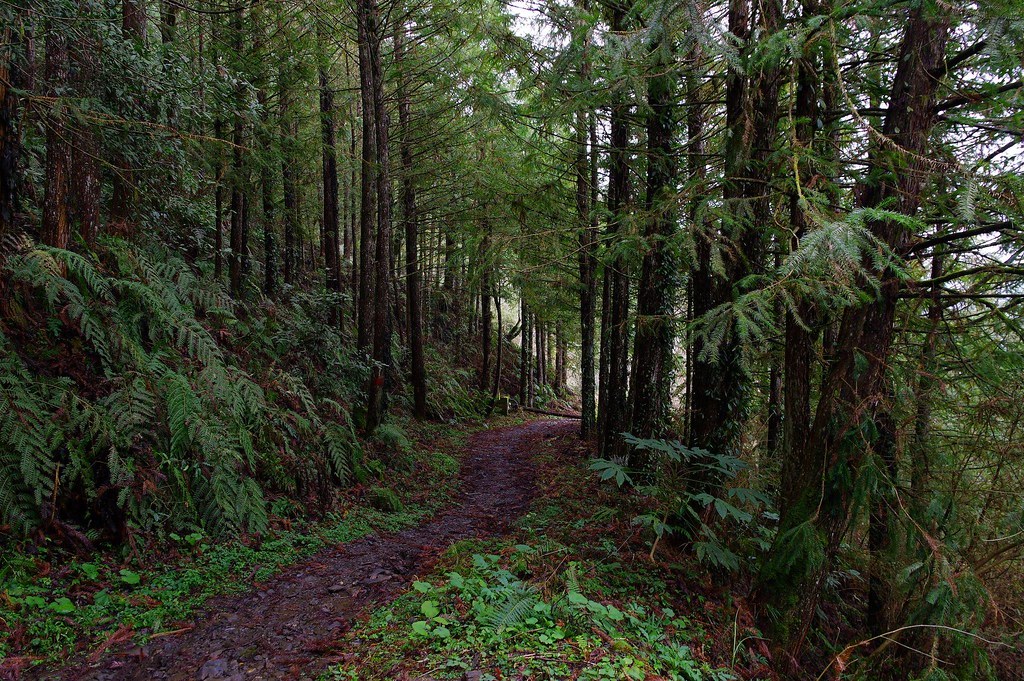http://www.earthday.org.tw/column/68/6283?
巴黎協議也關注到森林了,然後呢?
由 瞿涵 在 發表
國際的氣候行動不再侷限於化石燃料,森林保育和復育也登場了。在COP21通過的巴黎協議,傳達了一個強烈且前所未有的訊息:REDD+計畫(Reducing Emission From Deforestation And Degradation,減少毀林及森林退化造成的溫室氣體排放倡議進階版)是下半世紀全球氣候達到淨零碳排放目標的一個重要關鍵。REDD+藉由國際資金的後援,提供開發中國家財務上的誘因,減少伐林和森林退化、促進森林保育、永續管理並加強森林的碳儲存量,進而得以減少碳排放。

REDD+被納入巴黎協議,並不只是一個小進展。在1997年通過的京都議定書中,因為擔心成效而將開發中國家的森林保育排除在外,但絕大部分毀林造成的碳排放,正是發生在開發中國家。雖然REDD+曾在2005年重回談判桌,國際社會又再花了10年的苦工,處理之前導致REDD+無法被採納的細節。現在,REDD+已被正式納入巴黎協議的第五條款,終於提供足夠的政治訊號,來動員我們迫切需要的森林相關行動。
這項勝利代表了什麼,接下來又會發生什麼?有四個議題值得關注:
一、政府集結財務投資,私部門可望跟上
這項進展帶來的最大的影響之一,便是政府將把金錢投入那些他們談論已久的地方。在巴黎COP21之前,REDD+就已經吸引到估計約100億美元的國際投資,絕大部分來自政府單位。COP21召開之初,挪威、德國和英國政府共同承諾,在未來五年內加碼50億美元。各國在「國家自定預期貢獻(Intended Nationally Determined Contributions, INDCs)」中提出充滿企圖心的森林相關氣候目標,而這些投資為各國著手啟動這些目標提供了穩固的財政基礎。許多人也期望巴黎協議的長久效力,能夠吸引來自其他已開發國家,以及透過零伐林政策及碳交易市場而投入的私部門,提供新的長期投資。
二、現存的架構將指引REDD+行動的發展
金錢當然不是唯一考量。REDD+絕不是一項慈善事業,而是一個獎勵良好表現的機制,各國必須證明自己的森林保育成果帶來減碳效益,才能夠獲得資助。由於2013協商定案的華沙機制架構,部分國家已經開始發展REDD+的測量、回報與認證(MRV)系統。華沙機制架構特別強調監測的重要,監測可確保各國的努力成果是透明且前後一致。根據這個架構,以下工作需要遙測和地面觀察:
- 監測森林砍伐面積隨著時間的變化
- 估算森林碳儲存的變化和砍伐森林造成的碳排放量
- 評估相對歷史基準或參考標準的進展,這個參考點可能或可能沒有依照「各國狀況」調整
當各國在培養他們的監測能力時,這些準則可以幫助他們把事情做得正確。
三、新數據將改善測量、回報與認證機制
即使有明確的指引,執行REDD+的重大挑戰就是缺乏數據,這指的是測量森林面積與碳儲存量的變化,以及為了要建立明確的歷史基準,而去了解森林消長與碳排放之間的關係。幸好,這些資料日漸容易取得,各國政府開始建立自己的森林監測系統,國際科學界持續釋出數據到公領域,其中重要的資料包括「GLAD年度樹木覆蓋虧損(GLAD annual tree cover loss)」,及「Woods Hole研究中心的森林生物量地圖(Woods Hole Research Center's forest biomass map)」。最近推出的「全球森林監測網-氣候(Global Forest Watch Climate)」則建構了一個容易使用的平台,提供各種可能取得的關於森林與碳的最佳資料。
四、REDD+的規模可能會持續成長
巴黎協議中的其中一個重要規範,就是簽署國家必須每五年集會一次,強化他們因應氣候變遷的行動。在巴黎協議納入REDD+,便是鼓勵各國把評估森林保育與管理,當成他們減碳進展中的一個關鍵要素。更易取得的資料與科技,讓各國有能力衡量每次集會之間的進程,並訂定關鍵且以科學為基礎的森林保育目標以進一步投資,進而強化新的氣候承諾。 例如全球森林監測網這種工具,便是把所有可得的最佳資訊集中在一處,而產生助益。
森林更光明的未來
將森林納入最終版本的巴黎協議,看起來似乎是一件理所當然的事情。畢竟森林砍伐造成全球每年大約10%的碳排放量,幾乎等於所有汽車和卡車的碳排總量。同時,保護森林可以完全消除上述這些碳排放,藉由強化碳固存,還可以為全球額外減碳至少2%。然而,這花了將近20年談判和修正,才建立起森林保育在全球因應氣候變遷行動中的重要地位。
現在,新協議明確地支持REDD+,森林與它們在氣候變遷調適中的貢獻,有了更光明的未來。新資金將投入、執行方針很明確,政府和科學界正在慢慢消除過去造成阻礙的數據隔閡。許多國家終於有資源可以採取行動保護森林,這對於在本世紀後半達成巴黎協議的淨零碳排放目標而言,是不可或缺的。
International climate action isn't just about fossil fuels anymore - forest conservation and restoration are strategies that are here to stay. The new Paris Agreement adopted at COP21 sent a strong, unprecedented message that REDD+ is a critical and prominent piece of the new global climate goal to achieve net-zero emissions in the second half of this century. The REDD+ program aims to cut emissions by providing financial incentives - backed by international funds - to reduce deforestation and forest degradation, promote forest conservation and sustainable management, and enhance forest carbon stocks in developing countries.
The inclusion of REDD+ was no small feat. The Kyoto Protocol, adopted in 1997, excluded forest conservation in developing countries, where most emissions from deforestation are produced, over concerns of efficacy. Though REDD+ was brought back to the negotiating table in 2005, it took the international community another 10 years of painstaking work to address the details that previously prevented its adoption. Now REDD+ is permanently enshrined in Article 5 of the Agreement, finally providing the necessary political signal to mobilize much-needed action around forests.
What does this victory mean, and what comes next? Four issues are worth noting:
1) Governments Rally Financial Investment; Private Sector May Follow
One of the biggest impacts of the endorsement is that governments are putting their money where their mouths are. Leading up to Paris, REDD+ programs had already attracted an estimated $10 billion in international investment, largely from government sources. At the start of COP21, the governments of Norway, Germany and the UK collectively committed another $5 billion for REDD+ over the next five years. Such investments provide a solid monetary base to jump-start the ambitious forest-related climate goals countries put forth in their national climate action plans (INDCs) leading up to Paris. Many are also hopeful that the permanence of the Paris Agreement language will attract new, long-term investments from other developed countries, as well as private sector actors through zero-deforestation policies and carbon markets.
2) Existing Framework Will Guide Development of REDD+ Initiatives
Of course money isn't the only consideration. Far from being a philanthropic cause, REDD+ is a pay-for-performance mechanism that requires countries to prove their forest conservation programs have reduced emissions before they can receive funds. Some countries have already started developing their REDD+ measurement, reporting and verification (MRV) systems thanks to the Warsaw Framework for REDD+, finalized in the 2013 negotiations. The Framework's guidelines on monitoring are especially important for ensuring that country efforts are transparent and consistent over time. According to the Framework, remote sensing and ground-based observations are needed to:
- Monitor area of deforestation through time;
- Measure changes in forest carbon stocks and the amount of carbon emissions resulting from clearing; and
- Measure progress against a historical baseline or "reference level" that may or may not be adjusted for "national circumstances."
As countries build their monitoring capacities, these criteria will help them do it right.
3) New Data Will Improve Measurement, Reporting and Verification
Even with clear guidelines, a major hurdle to implementing REDD+ programs has been lack of data - namely for measuring changes in forest area and carbon stocks and understanding the relationship between forest change and emissions to establish an accurate historical baseline. Fortunately, these data have recently become more readily available as national governments build their own forest monitoring systems and the international scientific community continues to release data into the public domain. Notable data include the GLAD annual tree cover loss and the Woods Hole Research Center's forest biomass map. The newly launched Global Forest Watch Climate brings into one easy-to-use platform these and all other best available information related to forest carbon.
4) REDD+ Will Likely Be Scaled Up Over Time
One of the key provisions of the Paris Agreement is that signatory countries must meet every five years to bolster their climate actions. With the inclusion of REDD+, countries are encouraged to measure forest conservation and management as a key component of their progress. The increasing availability of data and technology will strengthen new climate commitments by enabling countries to measure progress made between meetings and identify strategic, science-based forest conservation targets for further investment. Tools like GFW Climate can help by rounding up all the best available information in one place.
A Brighter Future for Forests
The inclusion of forests in the final Paris Agreement may seem like a no-brainer. After all, deforestation accounts for about 10 percent of annual carbon emissions worldwide, nearly equivalent to the emissions from all cars and trucks on the planet combined. Meanwhile, protecting forests could eliminate these emissions entirely and reduce global emissions by at least another 2 percent through enhanced carbon sequestration. Yet, it's taken nearly two decades of negotiations and refinement to establish forest conservation as a critical component of the global efforts to fight climate change.
Now that the new Agreement explicitly endorses REDD+, the future is brighter for forests and their contribution to climate mitigation. New funding is coming in, the guidelines are clear, and governments and the scientific community are slowly closing the data gaps that have presented hurdles in the past. Countries finally have the resources they need to ramp up action on forests, which will be critical to achieve the goal set in the Paris Agreement of getting to net-zero emissions in the second half of this century.
Written by Nancy Harris and Fred Stolle
Published on World Resources Institute, January 05, 2016
沒有留言:
張貼留言